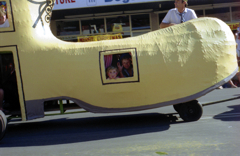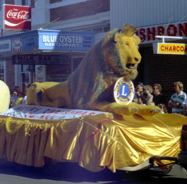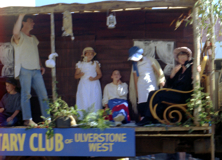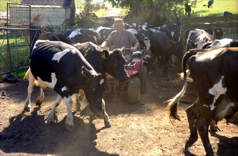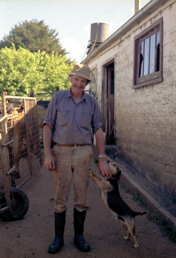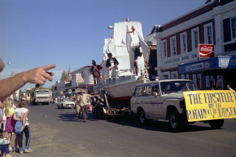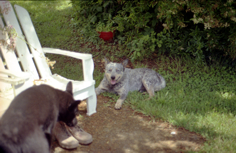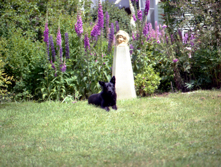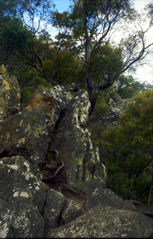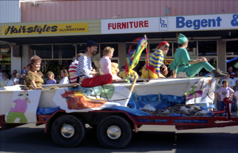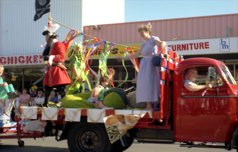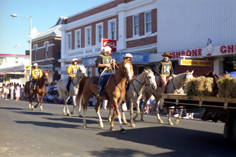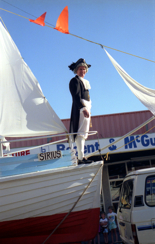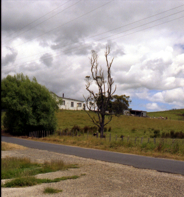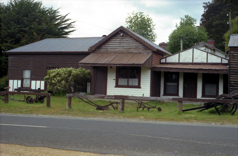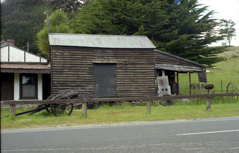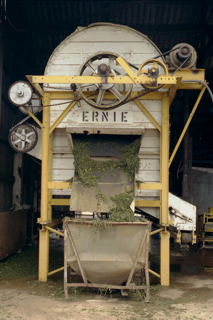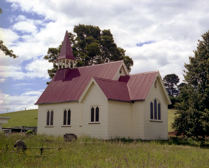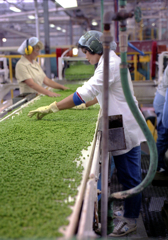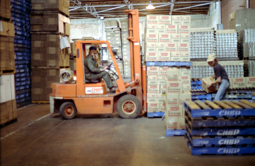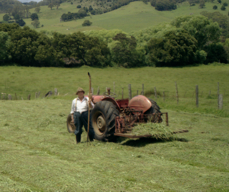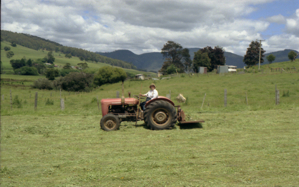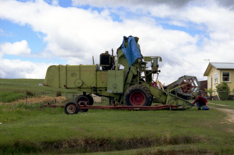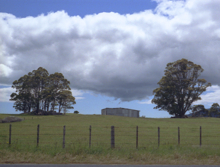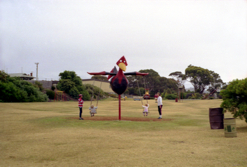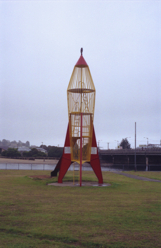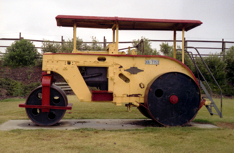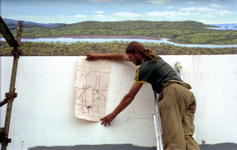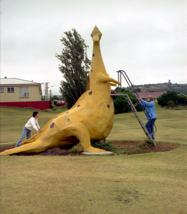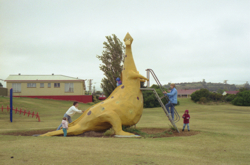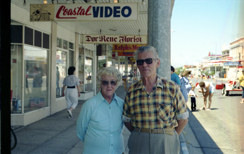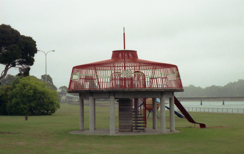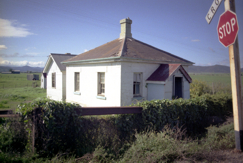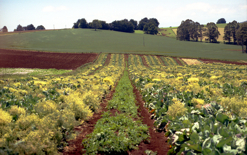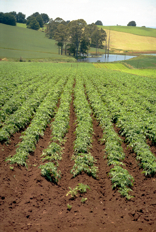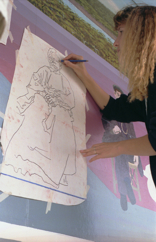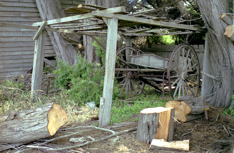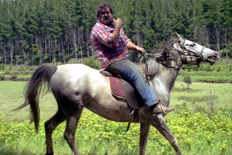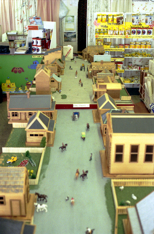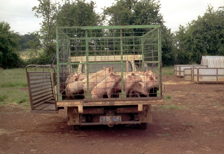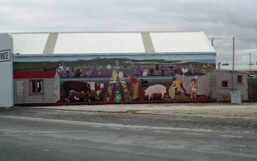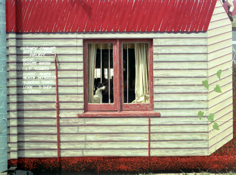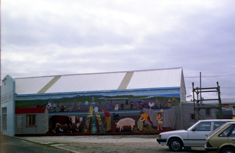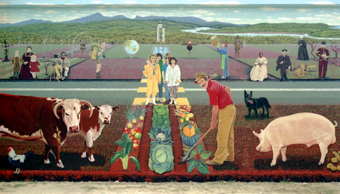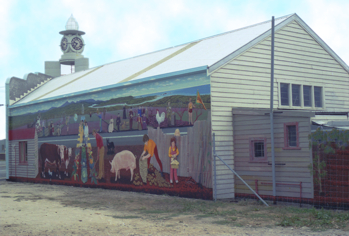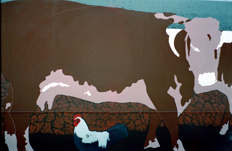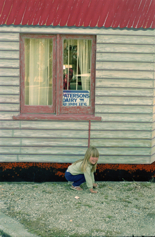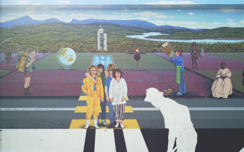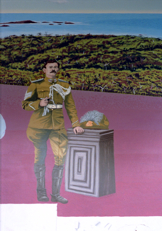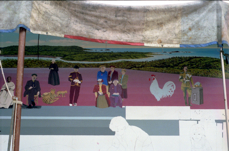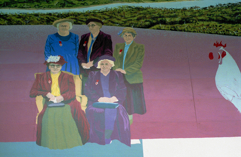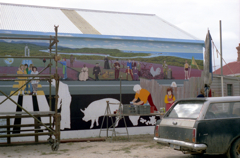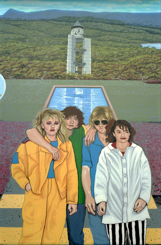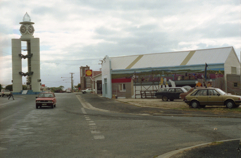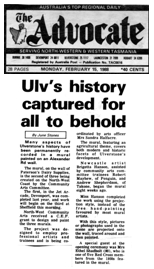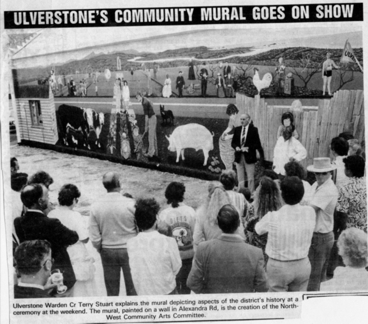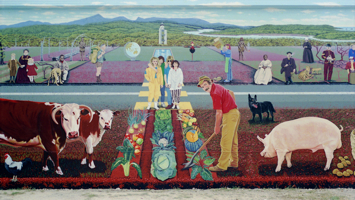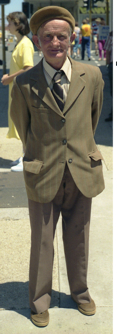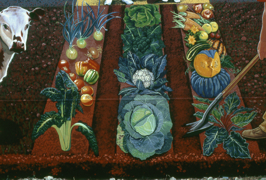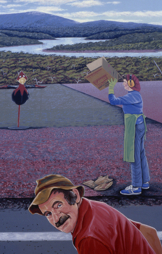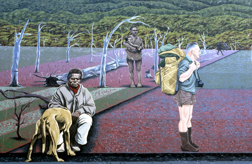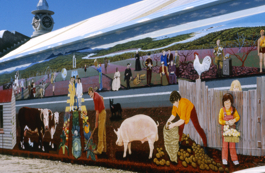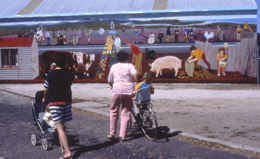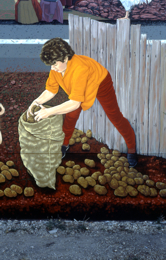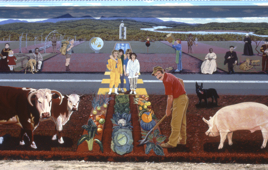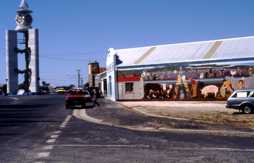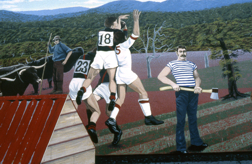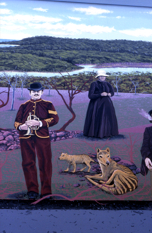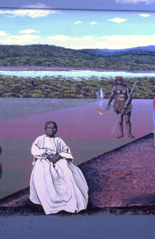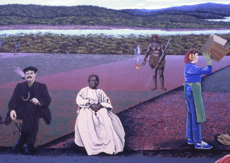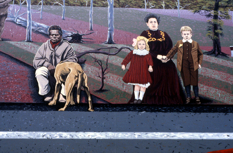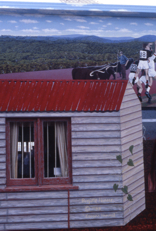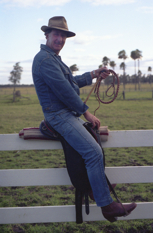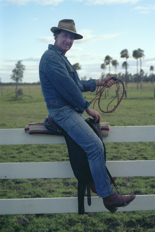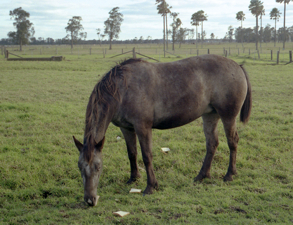

web pages currently being updated.
Click on any image to enlarge
"Levens Harvest" Paterson Dairy Supplies,
56 Alexandra Rd. Ulverston Tasmania.
1988.
Ulverstone (pop ~10,000) Located 19 km west of Devonport and 125 km north west of Launceston. Ulverstone is located don the mouth of the Leven River in North Tasmania Australia.. In the early days the town was known as The Leven until it changed to Ulverstone which was derived from Ulverston in Lancashire, England. It is one of the larger towns on the north-west coast of Tasmania. The area's economy is dependent on agriculture and tourism. The Shrine of Remembrance is a strange clocktower. It was designed and built by immigrants from Europe in 1953. It is a memorial for returned service personnel with each of the columns representing the three military services - Army, Navy and Air Force. Ulverstone is known for its many quirky parks ANZAC Park has a good children's playground and barbeque areas; Fairway Park has a bird sanctuary and water-slide; Shropshire Park has a footpath inscribed with Royal Australian Navy history; and Legion Park has great coastal views. In addition there is Tobruk Park, the Boer War Memorial, and Queens Gardens. A park beside the Leven River has a unusual fountain which has been programmed to offer a wide range of variations when it is turned on. The park also has an 'Spaceage' childrens playground (with huge rockets and space ships)
For me hitting this town felt as if I had walked back into my childhood from the 50's and 60's.The dominating clock, the war memorials, very conservative,strong religious values and the parks full of equipment and trees reminiscence of an earlier time.I remember I was strangely fascinated as if I had stepped into a surreal painting. Yet each man made object had been made with such craftsmanship and emotion. The influence of post war emigrants especially the Dutch and the return Soldiers. I was first put into a hut type accommodation at a beach were the sands were deep orange from the chemical pollution from the local paint manufacturing plant. At night the place was rattled by a nearby rail way line, carting away huge logs on what seemed to be mile after mile of carriages. It really sadden and shocked me to see in this pretty part of the world such pollution and rampaging harvesting of the timbers for wood chip. I was just 6 weeks from major back surgery, had no transport so the walk to the mural was too far. I ended up at a small flat close to the mural and was then able to concentrate on the job.It was a community art project and 4 trainees were included. Two were artists already and very good, two were young girls uninterested,unskilled and demanding. We ended up unable to work together ,ps I lost "it" and i found 2 very talented local artists who really worked well and who learnt a lot. These 4 artists went on to paint their own murals at Sheffield, so I was very pleased.
I loved this man,he was like the farmer I had used at the Muswellbrook mural. We had been driving around the area taking photographs and getting a feeling of the way of the land. But the big but was when I had used him as the main character at the front of the mural and the painting was nearly finished he came and abused me for using him and demanded that he be taken off. I changed his face so he looked different but I was sad that I had upset him and I still love these photographs.When you work in such a public way the response can often surprise you.The impact on the normal rhythms of daily life is often reflected in the mural and it is a finely tuned machine to try to get it right but also be inspired and excited by the work to arrive at the best you can do
Ulverstone parade. John Howard's country backwards - The first fleet, first settlers actually incredibly visual town in its visions of themselves.Penguin the town next to it had concrete penguins as sculptures. I remember I was painting on a Sunday and some people straight out of the fifties told me off for working on the Lords day. My mouth fell open and stayed that way!
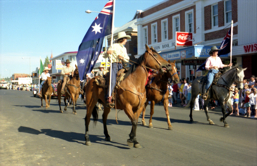
Pirates,fairy tales, Lions clubs, First Fleeter's, High Country horsemen, Boys Scouts, Convicts, early settlers.Look below and see the "Clock" I am still looking for the Tasmanian Aborigines in any of these floats. At least the convicts are finally acknowledged. I have not seen any post war migrant culture yet.I sensed a beginning of a culture war at the time but only with real history can I put this into perspective. I love the image of captain Cook at right.
.The rich volcanic soil and high rainfall makes a it an ideal area for farming. Tasmania is stunning country, a visual treat without the dryness which dominates the mainland.
I feel stimulated again
by just looking at these images, I find you often have to put distance to an event to see it with clearness, and to "see" an over view or be an outsider as I was.

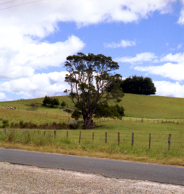
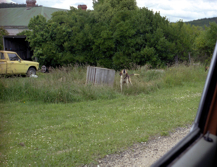

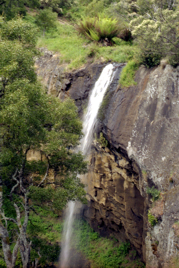
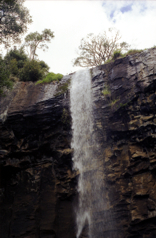
Final Resting Places
The Five of us drove around Ulverston, taking photographs, talking to people we met.
"Good Dogs."
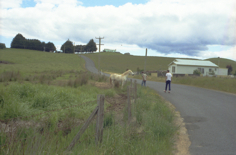


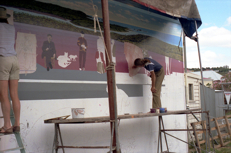
Anzac Park
After we had finished the research and talked through our ideas, I followed through a feeling that had been haunting me since I had been working in Hobart.There were some place I had visited that had given off unexplained feelings of dread. Walking along a beach at sunset,going to Port Arthur.After my surgery I had to learn to walk first and try to settle my fears, Every morning I was dropped on the other side of the bridge and would then follow a path along the water line till I arrived at my studio. At some spots I would feel chills.Though beautiful it was always a disturbing walk.I later found it was the site of one of the first massacres of the aborigines by early settlers.
Good Legs - lol.
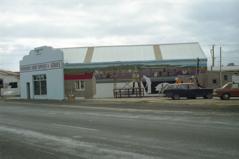
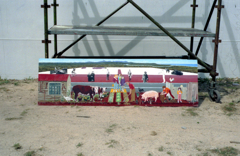
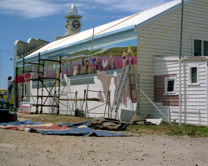
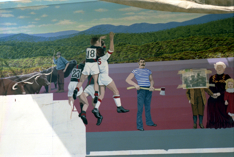

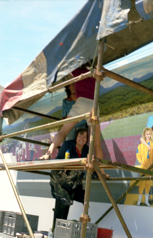
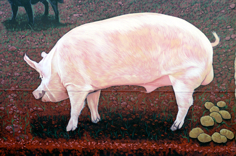



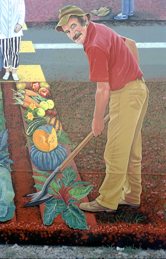
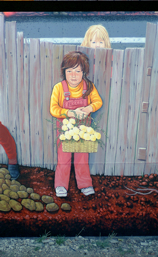

I decided to paint what I later called a time line.The site of the town was imaged as it was before it existed pre European settlement. One point perspective was used to create the ground plan and a linking of the checked floor of lavender, volcanic soil and green fields.So it went from green fields of nature, aboriginal culture, early settlers, youth, and the farming of the Leven. I then placed people and objects onto the check floor plan like pieces in a board game or Chess.The uniqueness of the parks and memorials also influenced how I placed the images.
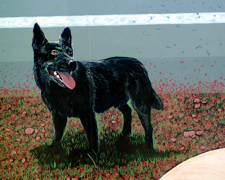
A North-West Coast Community Arts Association Project
Artist-designer, Birgitte Hansen
C.E.P Trainees Artists' Andrew Shepardson - Robert Mayhew - Promotional Trainees Donna Such - Jackie Cook
Co -Ordinator Sandra Halfacre. Volunteer artists - Dee Anne Russel - Mark Tipper
Owner of building, Patterson Dairy Supplies. Robert Patterson. Finished mual about 20th Febuary 1988
Dee Anne Russel
Mark Tipper
Robert Mayhew
Andrew Shepardson
Birgitte Hansen
Left Sandra Halfacre Right Robert Patterson
Australia Day Parade
Wonderful machine and photo,
Click on this to see children in window
Reminds me of the painting American Gothic
Land of Peas and Potatos
Edgels Factory
Donna Such - Jackie Cook
The work was commissioned by The Arts Tasmania (formally The Arts Council).
The mural is still on the site but seriously aged,the cement sheeting has failed over time.
Horseman without horse
Missing horse
